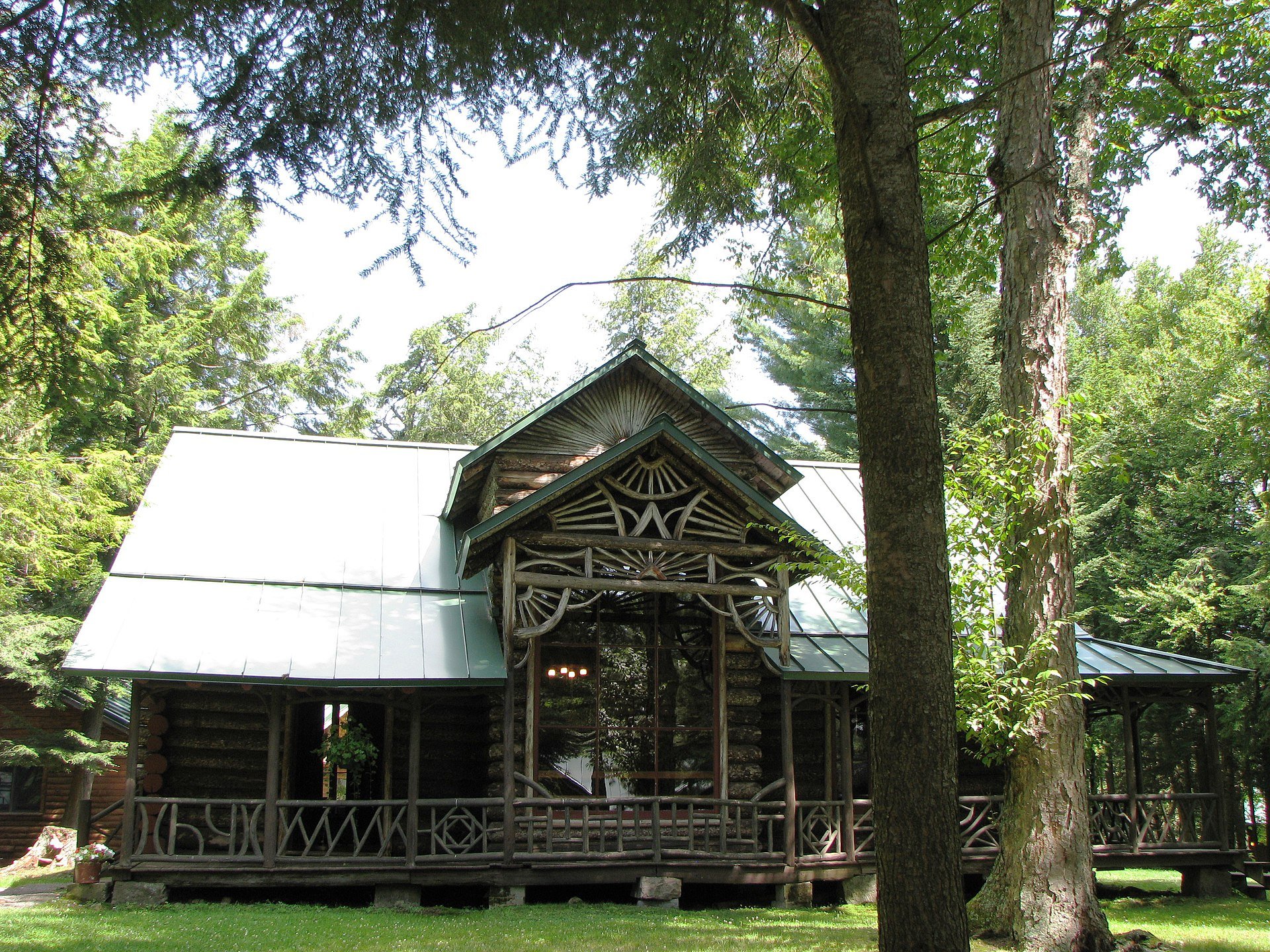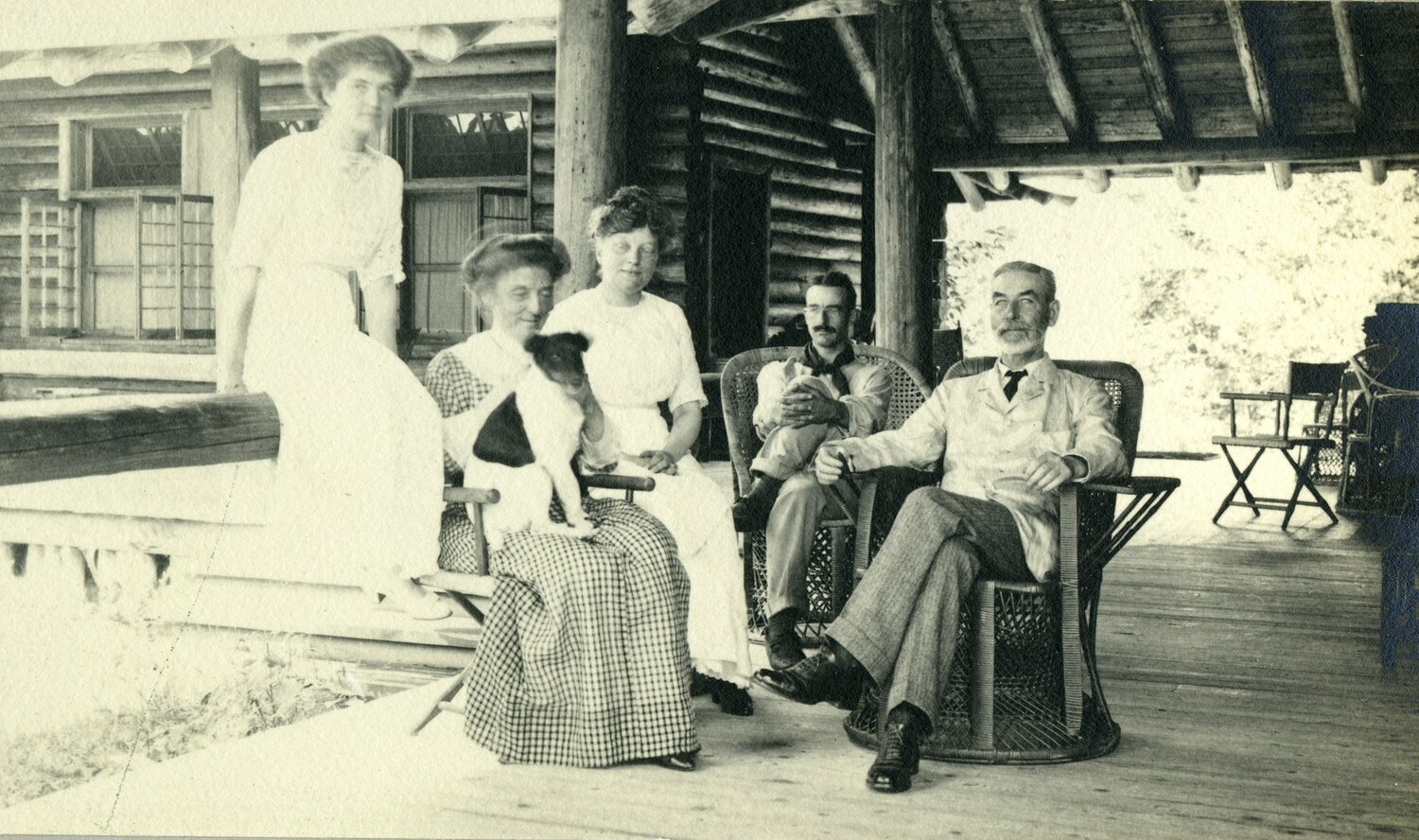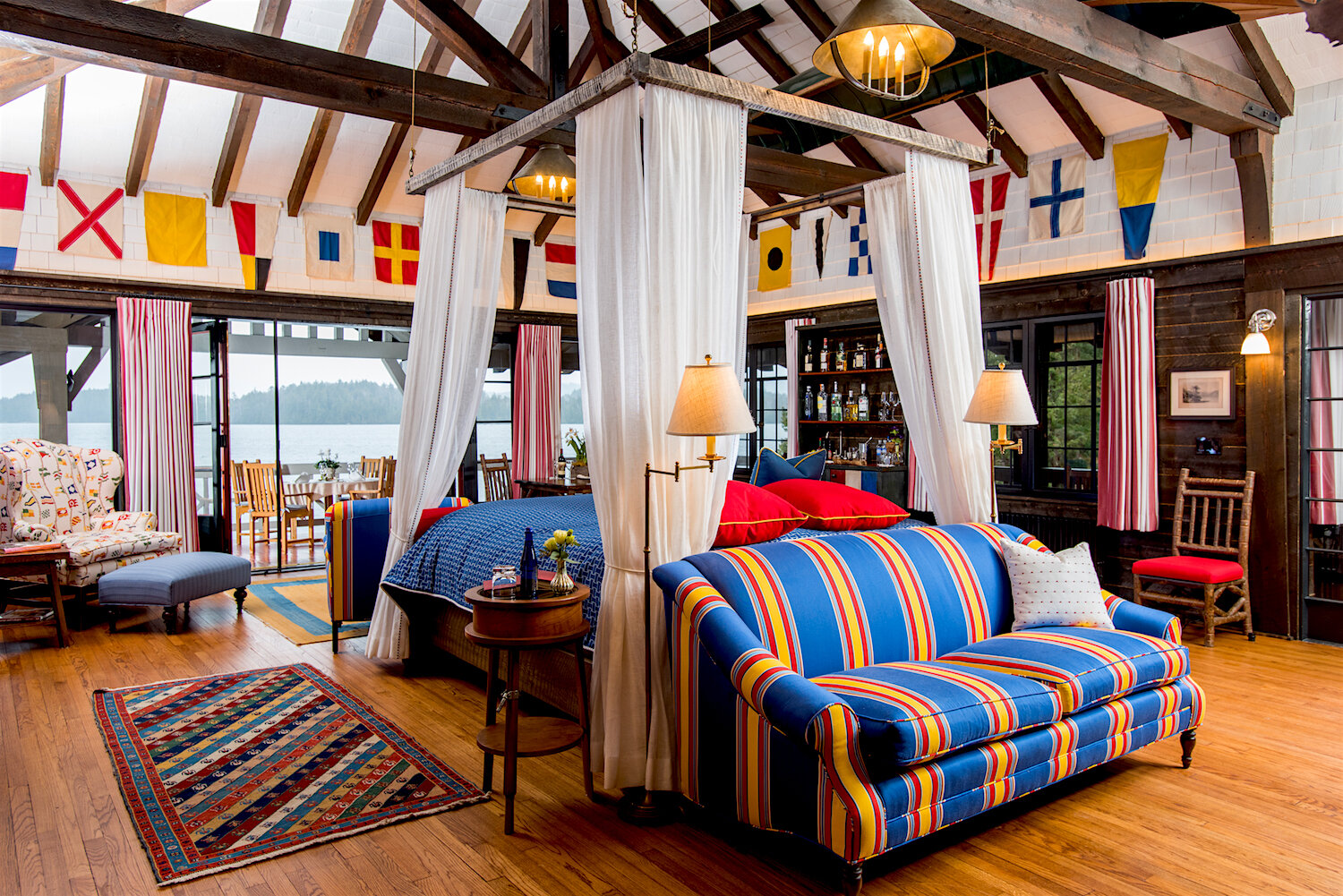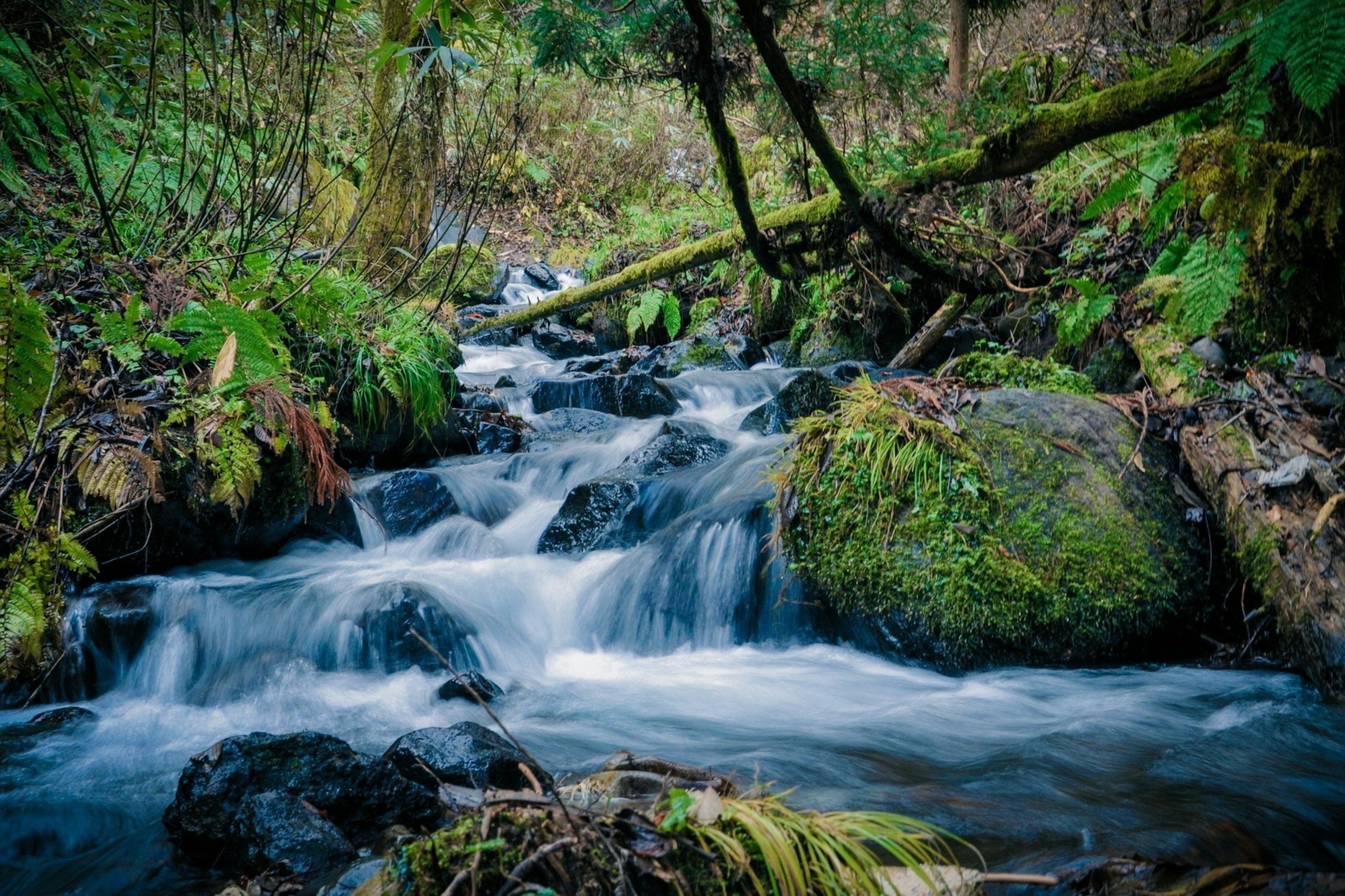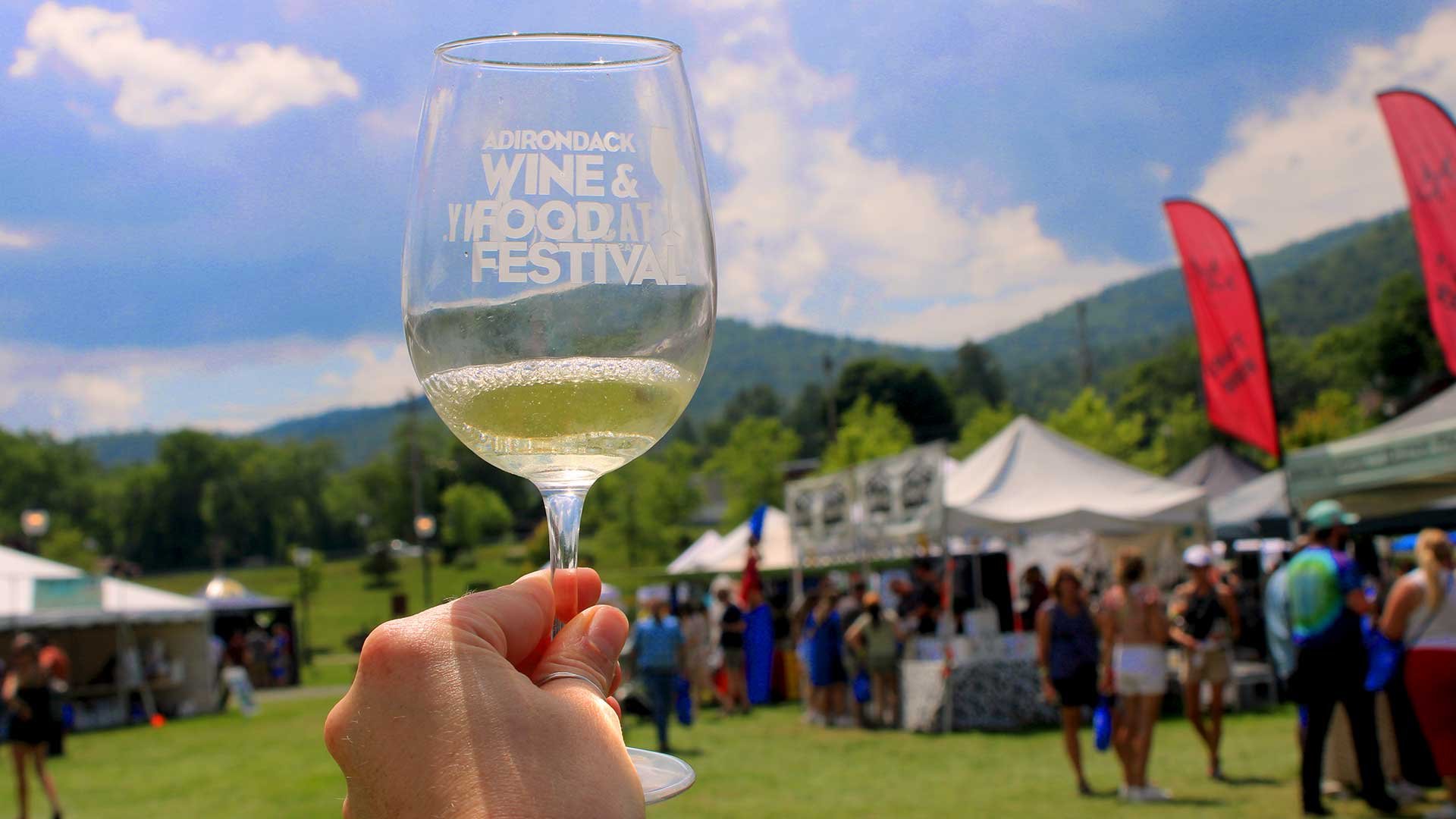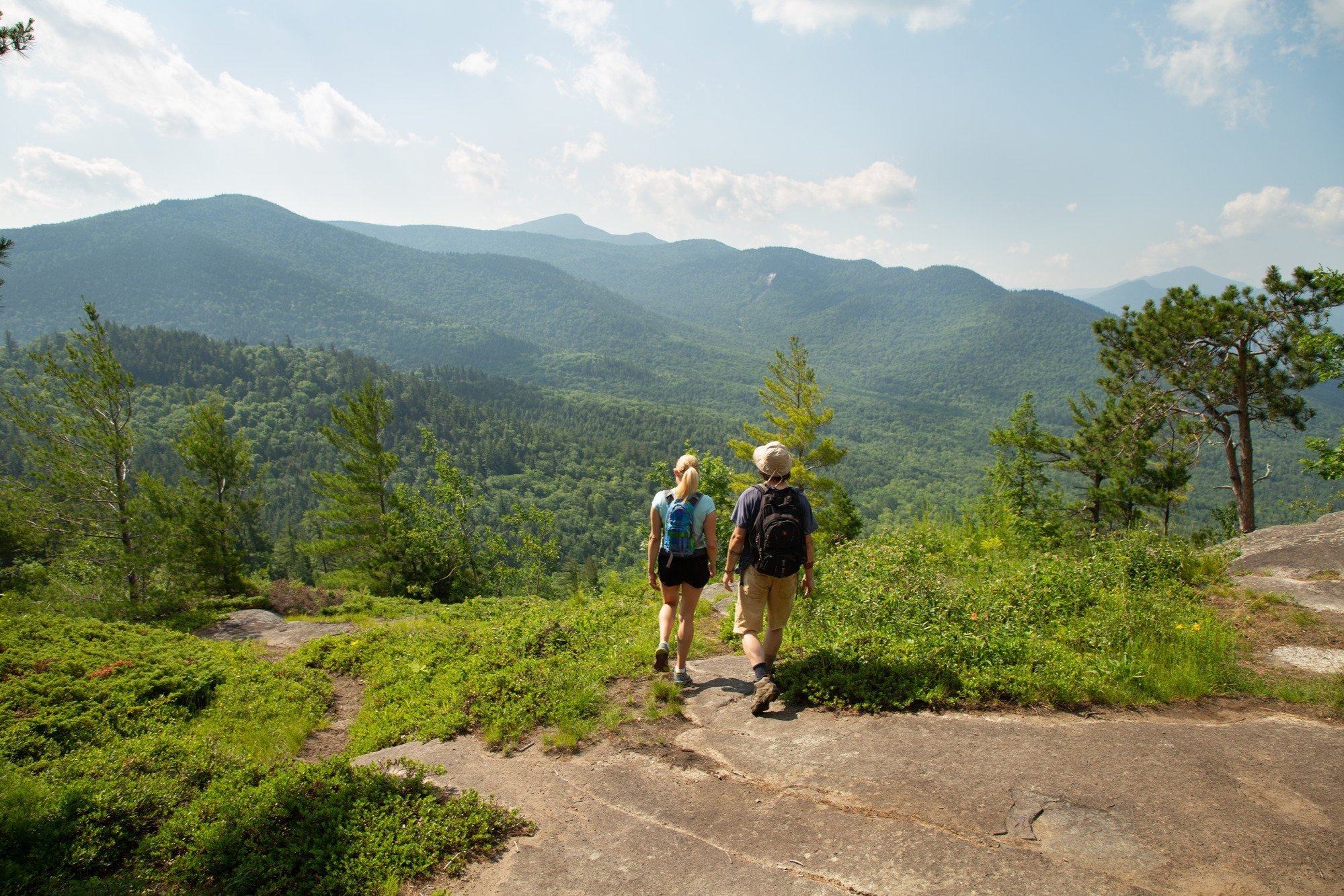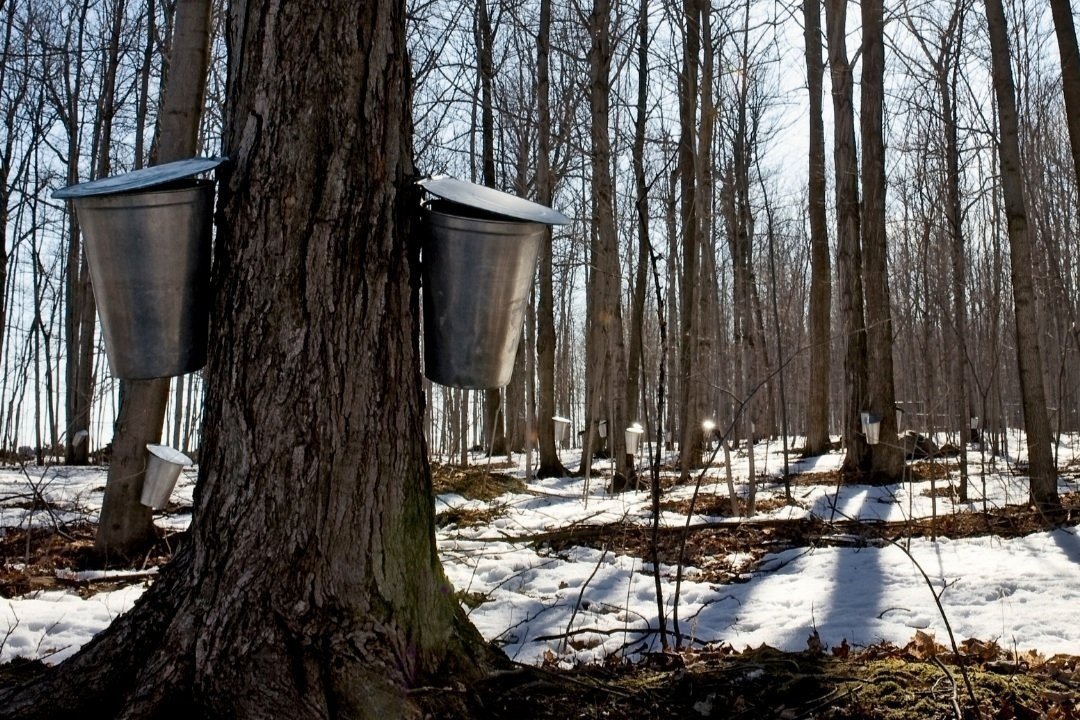Gilded Age Splendor: Great Camps of the Adirondacks
Where J.P. Morgan, the Rockefellers, and Vanderbilts played in the New York wilderness.
Great Camp Sagamore.
In the heart of New York State’s Adirondack Mountains are unique architectural wonders that offer a glimpse into the lavish lifestyles of America's wealthiest families during the late 19th and early 20th centuries. These sprawling estates, known as Great Camps, are a treasure trove of history and grandeur from the Gilded Age.
The Adirondacks' pristine lakes, streams, and pure mountain air attracted the captains of industry, shipping and railroad magnates, and titans of banking and finance, who purchased vast tracts of wilderness to create private summer retreats to escape from the hot, dirty, crowded cities they were arguably responsible for creating.
Exploring the Great Camps of the Adirondacks is a must for travelers today seeking to understand the Park's history, popularity, and natural beauty.
Today, roughly 35 Great Camps still exist. Many remain privately owned, but several are open to visitors. In addition to touring some of these masterpieces, travelers can stay at some of these majestic estates.
The Gilded Age: Opulence, indulgence, and a booming economy.
Before we delve into the enchanting world of Great Camps, it's essential to understand the context of their creation. The Gilded Age spans the 1870s to the early 1900s and was a period of unprecedented economic growth and prosperity in the United States. Industrialists, financiers, and other business giants amassed vast riches, and they flaunted their fortunes through extravagant displays of wealth. Read any Edith Wharton novel or watch HBO’s The Gilded Age or the film The Age of Innocence, and you’ll understand what we’re talking about.
The Hedges, Blue Mountain Lake.
Like Newport in Rhode Island or Massachusett’s Berkshires, the Adirondack Park, with its pristine wilderness and serene lakes, became a favored playground for wealthy families seeking respite from the hustle and bustle of city life. Here, they built lavish retreats that served as summer homes where they could indulge in outdoor activities like hunting, fishing, and hiking (and even bowling) while still enjoying the comforts of luxury living.
During the Gilded Age, America’s wealthy class was divided between adopting the trappings of the European aristocracy's lifestyle or creating something distinctively American to showcase their achievements to the rest of the world.
Great Camp architecture was an effort to display Americans’ efforts to emulate nature, honor nature and even tame wilderness. Certainly, Adirondack rustic architecture in the late 1800s still had European influences, and the early great camps often resembled Swiss chalets with furniture similar to that found in an English garden.
However, America's fascination and respect for nature and wilderness significantly differed from Europe's. The builders and designers of the Great Camps sought to replicate wilderness and blend in with the landscape's features, perhaps to emulate the American ideal of rugged individualism or the nation’s desire at the time to comingle with natural surroundings.
The birth of the Great Camp: from rustic campsites to sprawling estates.
Historians attribute the popularity of tourism in the Adirondacks to the publication of William H. H. Murray's "Adventures in the Wilderness: Or Camp-Life in the Adirondacks" in 1869. The book’s publication coincided with Americans embracing the idea of a "vacation,” a time spent escaping the humid city and enjoying mountain air.
W.H.H Murray’s seminal publication..
It’s hard to believe today, but just 150 years ago, the idea of a “vacation” or “time off” was unheard of for American workers across multiple classes. Historians believe the term “vacation” was coined in the Adirondacks due to Murray’s book.
After the release of “Adventures in the Wilderness,” one news writer reported Mr. Murray's book drew many pleasure-seekers into the region. Indeed, the Adirondacks experienced a significant increase in recreational campers, hunters, and anglers. Around 2,000 to 3,000 people annually arrived from New York, Boston, Hartford, and Philadelphia.
Murray’s book was everywhere—sold in unexpected places, hawked through train cars, and placarded in steamers. Every tourist seemed to have a copy.
During the summers of 1869 and 1870, so many people visited the Adirondack Mountains that it became known as "Murray's Rush." Demand for Murray's book increased, and fake "Tourist's Editions" were produced. Railroads gave free copies of the book to those who bought round-trip tickets to the Adirondacks. Soon, everybody traveling to the Adirondacks owned a copy of Murray's book.
Getting to the Adirondacks was half the adventure.
Travelers to the Adirondacks today have relatively easy access to the region via major highways like the New York State Thruway and the Adirondack Northway, and then a network of NYS or locally well-maintained roads connecting towns and villages. For example, one can travel by car from NYC’s Chelsea neighborhood to Raquette Lake in the Central Adirondacks in roughly 4.5 to 5 hours (maybe less if they use Waze and can evade Johnny Law).
However, in the 19th century, that same journey was often a 24-hour or longer ordeal. And making the trek in 1880 involved several modes of transport.
During the Gilded Age, a traveler from New York City might leave on an evening sleeper train car or boat bound for Albany. They would arrive in the morning and board another series of trains to Saratoga or North Creek. Then, tourists would connect with a stagecoach or buckboard wagon over bumpy dirt roads or tracks to reach their destination a few hours later.
Private rail car. Photo courtesy the ADKX.
The Gilded Age equivalent of a private jet: The personal rail car.
Lucky for them, the superwealthy had deluxe access to the Adirondacks, which emulated the first-class accommodations on luxury transatlantic ships they were used to.
They used private rail cars to take them from major metropolitan areas to northern NY train stations. Private train cars had sitting rooms, dining areas, galleys, bedrooms, bathrooms, and even quarters for servants.
The Adirondack Experience in Blue Mountain Lake has one of these cars displayed at its museum. It is an exquisite jewel box with mahogany paneling, marble countertops, crystal light fixtures, and velvet upholstery. Visitors can walk through the car and marvel at what it must have been like to travel in such luxury.
Traveling by water in the Adirondacks.
Train travel, though, could get one only so far in the Adirondacks during the Gilded Age. At some point, no matter one’s economic status, travelers would have to board a wagon or stagecoach to take them to their destinations. Sometimes, the mode of transportation was via water.
Depending on the circumstances, travel by water had advantages, especially to remote areas, that would make land travel especially difficult and taxing. Initially, Adirondack travelers hired guides to take them by boat on the final leg of their journies.
Adirondack steamboat.
By the mid-1880s, however, an intricate system of steamboats and carries (a “carry” in the Adirondacks is a piece of land that connects two bodies of water) ferried guests through many of the area's bodies of water, providing a slightly more comfortable form of travel. Yet, travelers might still have to walk some distance over land connecting waterways to reach their final destination.
The fact that the region was difficult to reach made it more appealing to those with the time and resources to travel there. For some, the difficulty of the journey was a point of pride, showing off their toughness in being able to endure such a challenging experience.
Embracing the Adirondack Great Camp lifestyle in the Gilded Age.
When wealthy individuals began to make the Adirondacks their seasonal homes, they built vast estates that came to be known as "Great Camps." These incredible properties were more than just summer residences—they were self-contained compounds built to accommodate large extended families, guests and numerous servants.
Railroad bringing visitors to the Adirondacks.
Great Camps were meant to blend seamlessly into their natural surroundings with rustic yet elegant architecture. Designers and owners incorporated local materials such as timber, stone, and bark into the decor to ensure the ambiance was authentic to the region.
The Great Camps’ unique style has stood the test of time, and these structures still inspire awe and admiration. We always scratch our heads in wonder when we see multi-million dollar listings on real estate porn Zillow for properties in the Adirondacks that resemble Tuscan villas, English Tudor manors, or the Jungle Room at Elvis Presley’s Graceland when the Adirondack Great Camp aesthetic is so beautiful.
William West Durant, the builder considered to be the godfather of the Great Camp era, is known for his vision that helped shape the Adirondack landscape. Durant pioneered the Adirondack style, characterized by its use of native materials, asymmetrical designs, and an emphasis on harmonizing with the natural environment. His influence can be seen in many of the Great Camps that still stand today.
Camp Pine Knot: The first Great Camp.
Pine Knot was financed by Thomas C. Durant, William Durant’s father. He was a prominent railway and banking executive with, let’s say, a lot of moral flexibility. By 1873, he had acquired around five hundred thousand acres of the Adirondacks and owned the Adirondack Railroad. To put that in context, the Adirondack Park today consists of six million acres (bigger than the states of Connecticut, Vermont, New Hampshire, Massachusetts, and New Jersey). Durant's holdings amounted to close to 10% of the region.
W.H.H. Durant’s cottage at Camp Pine Knot.
In 1876, seven years after Murray published his treatise on the Adirondacks, the Durants built a rustic compound on Raquette Lake in the center of the Adirondacks. The family used the property to entertain potential investors in the Adirondack Railroad and the elder Durant’s land development schemes.
While T.C. Durant may have held the purse strings, William W. Durant was the design visionary behind Pine Knot. The property’s group of simple cabins was the first incarnation of Camp Pine Knot, which would become hugely influential in developing the Great Camp style.
Accessible only by water, Camp Pine Knot grew to comprise around twenty-four buildings, including a seven-room cabin named "Swiss Cottage," four "Log Cottages" with one to three rooms, two frame cottages having three and five rooms, a "Glass Dining Room," and a five-stall horse barn and wagon shed.
Many Camp Pine Knot buildings were connected via covered walkways. Additionally, there was a four-room floating bark cabin called "Barque," which measured 20’ by 60’ on a log raft. Allegedly, Barque was used primarily to escape the dreaded black flies in the Adirondack spring; it was fully equipped with a kitchen, bath, and running water.
Camp Pine Knot main lodge.
T.C. Durant died in 1885, and ten years later, his son William Durant sold Camp Pine Knot to Collis P. Huntington, an industrialist railway magnate whom William befriended. Over time, Huntington would prove instrumental in advancing William Durant’s fortunes, lending him over $200k (the equivalent of $7.4 million today) using Durant’s Adirondack Land holdings as collateral.
In an act of pure humility, Collis renamed Pine Knot “Camp Huntington.” SUNY Cortland now owns it. The Camp received National Historic Landmark status on Aug. 18, 2004. Camp Huntington is available for rent and is sometimes open for public tours. It is viewable by boat tours operated by Raquette Lake Navigation Company. For information on how to visit Camp Huntington, visit SUNY Cortland’s website.
Camp Uncas: J.P. Morgan’s mountain retreat and private lake.
After Camp Pine Knot, William Durant built Camp Uncas for his personal use on a secluded refuge tucked away exclusively on the shores of Mohegan Lake. New York City architect Grosvenor Atterbury designed the Camp.
J.P. Morgan’s Adirondack retreat: Camp Uncas.
The construction of Camp Uncas’s buildings began in 1893 and was completed by 1895. It takes its name from the young Indian chief in James Fenimore Cooper's “The Last of the Mohicans,” an ardent Adirondack visitor. Note: a real Uncas inspired the character, but his life story is a departure from Cooper’s tale.
Camp Uncas features a stunning collection of Adirondack-style buildings, including a main lodge, two log cottages called Chingachook and Hawkeye (additional references to Cooper’s novels), a dining hall and associated structures, a large house for employees, a blacksmith's shop, two barns, a carriage house, a shed, a greenhouse, a root cellar, a pump-house, a lean-to, and a boat house.
At 1,500 acres, Camp Uncas was impressive enough for American financier and banker J. Pierpont Morgan to purchase it in 1897. He and his family used it for the next 50 years as a vacation home.
J.P. Morgan’s heirs sold Camp Uncas to Margaret Emerson, the widow of Alfred Gwynne Vanderbilt, who owned nearby Camp Sagamore (more on that in a minute). General George Marshall (Chief of Staff of the U.S. Army under Presidents Franklin D. Roosevelt and Harry S. Truman, and later Secretary of State and Secretary of Defense under Truman) entertained Madame Chiang Kai-shek at Uncas in 1949 when the Marshalls were guests of Ms. Emerson.
Ms. Emerson bequeathed Uncas to a foundation, and then the camp traded hands until the Rockland County Boy Scouts bought the property to use as a camp. In 1975, Camp Uncas was returned to private use, where it has been gently restored and remains today. The camp was designated a National Historic Landmark on October 7, 2008.
Camp Sagamore: Vanderbilt retreat and incomparable Great Camp.
Photo courtesy Camp Sagamore.
Many historians consider Camp Sagamore to be the ultimate Adirondack Great Camp. Once again, our hero William West Durant built the camp from 1895 to 1897, right next door to Camp Uncas. Durant arranged the camp into two complexes a half-mile apart: the Upper, or worker's campus, and the Lower, or guest campus.
Sagamore was initially designed on a smaller scale than other Great Camps and was meant to be Durant’s private and self-sufficient family camp. Though small, it was fully detailed by Adirondack artisans who worked with Durant to produce ornate results.
Game room at Great Camp Sagamore.
For example, Great Camp Sagamore’s original dining hall was designed to accommodate intimate seating for a dozen people. The original camp had just five bedrooms in the Main Lodge, making it a small and cozy Adirondack lodge. Great Camp Sagamore was built as a year-round home for Durant and was a true embodiment of his vision for comfort and luxury amid privately owned, unspoiled wilderness.
Unfortunately, Durant's financial troubles and a family lawsuit forced him to sell Sagamore. Alfred “Freddy” Gwynne Vanderbilt, railroad tycoon, real estate developer and sportsman, purchased Sagamore in 1901 as a private recreational and entertainment retreat.
In the Gilded Age, when Adirondack camps were all the rage, the newly married Vanderbilt immediately began expanding and improving the already splendid facilities to better suit his vision. He added “Wigwam,” a large guest facility and men's entertainment headquarters, built a hunting camp at the end of the lake and introduced “The Playhouse” and its accompanying concrete tennis court.
Freddy Vanderbilt doubled the original dining room’s capacity and enlarged the kitchen and service facilities to allow for increased guest activity. Unfortunately, Mrs. Vanderbilt at the time, Ellen ("Elsie") Tuck French, did not share her husband’s enthusiasm for the camp's rustic character and wilderness surroundings, so between 1903 and 1908, Sagamore saw rare use until after the couple divorced.
Great Camp Sagamore’s Bowling Alley.
Things changed when Vanderbilt married Margaret "Maggie" Emerson McKim in 1911. Maggie was a leading society hostess, sportswoman and daughter of a drugstore owner who made his fortune inventing headache cure Bromo-Seltzer in 1880.
Together, the couple worked to make Sagamore more luxurious and comfortable. Their collaboration resulted in expansions, including a state-of-the-art hydroelectric complex supplying the Vanderbilts and their guests with electricity and a 100,000-gallon reservoir.
Great Camp Sagamore: A Gilded Age modern marvel and then fate intervened.
Maggie and Freddy installed a telephone system and built an enormous new laundry facility at Sagamore. Their addition of a bowling alley added a new dimension to the Great Camp’s entertainment features.
In the worker's complex, a new building for housing workers significantly increased Sagamore’s service capacities in anticipation of even greater numbers of guests. Sagamore provided a luxurious setting for the wealthiest families in America to relax and connect with nature while still enjoying all the comforts of civilization.
Sadly, four years after marrying Maggie, Freddy died in 1915 aboard The Lusitania. He was on a business trip on the luxury liner when a German U-boat torpedoed it. After the attack, Vanderbilt spent the last minutes of his life gathering up children and putting them in lifeboats. He promised a young mother he would find her an extra life vest. However, he was unable to find any and gave her his life vest. Vanderbilt did not know how to swim and was aware that there were no other lifevests or lifeboats available, guaranteeing his death. Given this, his actions were particularly heroic. He was only 37.
An Adirondack Great Camp legacy.
Following Freddy’s tragic and untimely death, Maggie Vanderbilt soldiered on and continued to entertain at Sagamore for several decades until she transferred the Camp’s ownership to Syracuse University. The University operated a conference center at the site until New York State offered to buy the property.
However, the State's acquisition as part of the Forest Preserve would have required the demolition of the historic buildings because of the "Forever Wild" provision of the New York State Constitution. To avert this, the Preservation League of New York State arranged with the State to take the title, transferring the property with deed restrictions to a not-for-profit institution that would provide suitable occupancy.
Great Camp Sagamore now functions as an educational facility. It was designated as a National Historic Landmark on May 16, 2000. The historic camp is run by the Sagamore Institute of the Adirondacks, Inc., and is open to the public by guided tour. It also offers accommodations and educational programming from May through October and on select “winter weekends. Camp Sagamore offers overnight and dining accommodations for guests interested in experiencing Great Camp life.
One note: Don’t confuse Great Camp Sagamore with the Sagamore Resort in Bolton Landing on Lake George; they are equally majestic but for entirely different reasons.
Camp Santanoni: Great Camp with a Japanese flair and tragic history.
Great Camp Santanoni is located within the 13,000-acre Santanoni Preserve, established in the 1890s by Robert C. and Anna Pruyn (pronounced “Prine”) on Newcomb Lake. The Pruyns were a prominent couple from Albany, NY. Robert C. Pruyn was an American inventor, banker, businessman, and politician. His family was one of America’s oldest and most esteemed Dutch families.
The Pruyn family on the porch at Santanoni.
Robert and Anna Pruyn were interested in creating a family retreat in the Adirondacks, where they could pursue outdoor adventures and establish a working farm employing modern agriculture methods.
In addition, Robert Pruyn was an admirer of traditional Japanese architecture. His father, Robert H. Pruyn, was Abraham Lincoln's minister to Japan, and his family lived there during his tenure.
The younger Pruyn’s vision for Santanoni included applying Japanese architectural and design principles, like the common roof and porch system, to Camp Santanoni’s buildings. The elements converged harmoniously with the Adirondack style while distinguishing Santanoni from other Great Camps.
More than 45 buildings made up the Santanoni complex. The Great Camp stayed in the hands of the Pruyn family until the 1950s.
Heirs of the Pruyns sold the Great Camp to the Melvin family from Syracuse. The Melvin brothers and their families enjoyed their Adirondack retreat until 1971, when tragedy struck; one of their grandchildren, Douglas Legg, disappeared without a trace from around the Main Lodge. Despite a massive hunt, the boy was never found.
Great Camp Santanoni.
Understandably, the Melvin family did not want to return to Camp Santanoni. It was abandoned for almost two decades, leaving it at the mercy of the elements.
Over that time, the buildings deteriorated and would likely be lost forever. However, a group of concerned citizens from Newcomb and the Adirondacks came together to form the Adirondack Architectural Heritage (AARCH) to save the camp and interpret it for the public.
In 1992, the State of New York endorsed the idea and committed to a plan to preserve the site. The state Department of Environmental Conservation (DEC), Adirondack Architectural Heritage, and the Town of Newcomb collaborated to stabilize some of the Camp’s major buildings. In 2000, the Camp Santanoni Historic Area was officially established, a management plan was adopted, and the Santanoni Preserve was designated a National Historic Landmark.
Over the 25+ years since preservation began, work has included new roofs for the main lodge, artist’s studio, and gate lodge and repairs to the more than 5,000 square feet of porches at the main lodge. The boathouse, the most seriously deteriorated of the main camp structures, was largely rebuilt, and restoration work was done on outbuildings, including the gazebo, pump house, and bath house.
The gatehouse at Great Camp Santanoni.
According to NYS Department of Environmental Conservation Historic Preservation Office Charles Vandrei, “Camp Santanoni is among the best-preserved examples of an Adirondack Great Camp. Many of its original buildings are still standing and in use today. Although it is not the largest or most elaborate of the Great Camps, it does contain some of the best examples of local Adirondack craftsmanship.”
Today, visitors can experience Camp Santanoni Historic Area for free. Only the Camp’s gate lodge is accessible by car. Depending on the season, the farm and main lodge can be reached by foot, bicycle, ski, or snowshoe via a well-maintained historic carriage road. It's a nearly 10-mile roundtrip hike in and out of the Camp. During the summer, there is an ADA-accessible wagon. View a full rundown of the camp’s activities on Santanoni’s website.
White Pine Camp: A new architectural style inspired by the Adirondacks.
In 1907, New York banker and businessman Archibald White purchased 35 acres on Osgood Pond near Paul Smith’s, the hamlet named after the Paul Smith's Hotel. White commissioned New York architect William Massarene to design the camp. Ben Muncil, the region's master camp builder, began constructing White Pine Camp in 1908.
White Pine Camp.
Three years later, White hired architect Addison Mizner to design several additions and alterations to some buildings. Sidebar: White Pine Camp was one of Mizner's first commissions. He became one of America's leading architects and the visionary behind the development of Boca Raton, Florida.
Massarene, Muncil, and Mizner designed and built a unique architectural camp that stands out among the Great Camps of the Adirondacks. The camp consists of 20 original buildings, including an owner's cabin, a dining hall, four sleeping cabins, two boat houses, an indoor tennis house, a bowling alley, and the iconic Japanese tea house, one of the most recognizable images of the Adirondacks.
The builders of White Pine Camp had a distinct style that set their rustic structures apart. Rather than following the heavy log style of William West Durant or the ornate artistry of later Adirondack techniques, they chose a more subtle approach.
Walkway over the water to the Japanese Tea House.
Their design featured soaring roof lines, asymmetrical-shaped buildings, and extensive use of natural lighting to create a dramatic effect. White Pine Camp's uniquely shaped windows in corners and clearstories provide every room with a range of natural light textures. The result is that the entire Camp seems to come alive with the beauty of the surrounding nature.
The creators of White Pine Camp were innovative in their architectural style and incorporated extensive landscape architecture, making it a beautiful Adirondack rustic estate. The Camp is home to several natural elements, including masonry walls, paths, bridges, flower plantings, and rhododendron gardens. These elements combine to create a stunning and harmonious environment that complements the Camp's grounds.
A Kansas City connection becomes the summer White House.
White Pine Camp was sold in 1920 to Kansas City Star publishers Laura Nelson Kirkwood and Irwin Kirkwood. They expanded the living room and the Camp's service complex and enhanced the landscaping.
Laura Kirkwood was a close friend of Mrs. Calvin Coolidge. When Laura died in 1926 at just 43 years of age, Irwin offered White Pine Camp to President Calvin and Mrs. Coolidge for the summer season. White Pine Camp served as the summer White House for the President and his family from early July through mid-September.
White Pine Camp boathouse. Photo courtesy White Pine Camp.
Among Coolidge’s guests were governors and ambassadors, labor and business leaders, cabinet members, and a future president, Secretary of Commerce Herbert Hoover. The President spent more time angling for bass and pike than he did tending to his executive duties—a fact that reporters chronicled with almost every cast.
Irwin Kirkwood died suddenly in Saratoga Springs in 1927 when he was 48. White Pine Camp was later sold to Adele Levy and Edith Sterns, daughters of the President of Sears-Roebuck; they donated the Camp to Paul Smiths College, which used it for student housing for the next 35 years. The current owners operate the camp as a museum and a destination for Great Camp enthusiasts to stay.
Indulge in the Great Camp experience.
We hope you’ve enjoyed this peek into some of the Adirondack’s most important Great Camps. But there is much more to explore. If you’re interested in immersing yourself in the Great Camp lifestyle, we recommend a stay at any of the following:
The Point – Surrender to a Gilded Age luxury experience at the former private estate of William Avery Rockefeller. It’s the only Forbes Five-Star property in Upstate New York and the first North American Relais & Châteaux member.
Boathouse suite at The Point, the former Rockefeller estate, on Saranac Lake (Robert DeNiro slept here)
Blue Hedges – Located on spectacular Blue Mountain Lake, this family resort has been welcoming guests for over 100 years. Once a Great Camp owned by General Hiram Duryea, Blue Hedges has been in operation since 1970 as an all-inclusive family resort.
White Pine Camp—As we mentioned earlier, White Pine Camp distinguishes itself from other Great Camps for its subtle, pre-modern aesthetic. The Camp has 13 unique cabins and cottages available for rent. Cabins are furnished with authentic hand-made Adirondack furniture, stone fireplaces and wood stoves, and stunning views.
Lake Kora – As their trademarked slogan states, “Stay where the world can’t find you.” The establishment is celebrating its 125th Anniversary - Lake Kora is a renowned Great Camp in the Adirondack wilderness with its own private 500-acre lake. The Camp was designed by William West Durant in 1898 for Timothy Woodruff, Lieutenant Governor of New York at the time.
Preserving the Adirondack Great Camp legacy.
While many of the Great Camps fell into disrepair following the decline of the Gilded Age, efforts have been made in recent years to preserve these historic treasures for future generations. Organizations such as the Adirondack Architectural Heritage Society work tirelessly to protect and restore these iconic landmarks, ensuring that their legacy lives on for years to come.
Visiting the Great Camps of the Adirondacks offers a unique opportunity to step back in time and experience the grandeur and elegance of the Gilded Age. From the rustic charm of Camp Pine Knot to the majestic beauty of Camp Sagamore, each estate tells a story of wealth, power, and the enduring allure of the Adirondack wilderness.
So whether you're a history buff, a nature lover, or simply seeking a glimpse into a bygone era, be sure to add a visit to the Great Camps to your Adirondack itinerary – you won't be disappointed.








